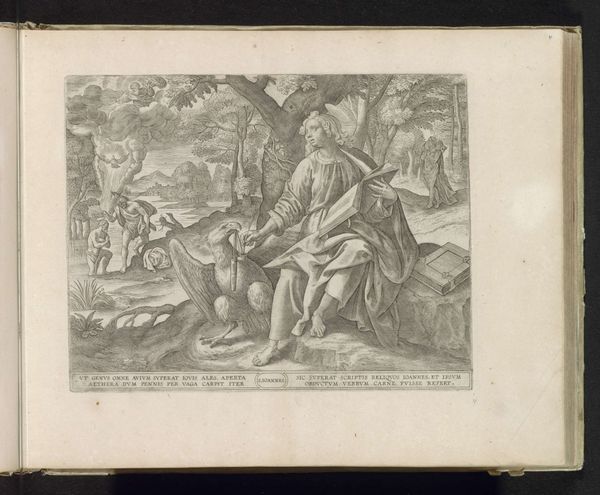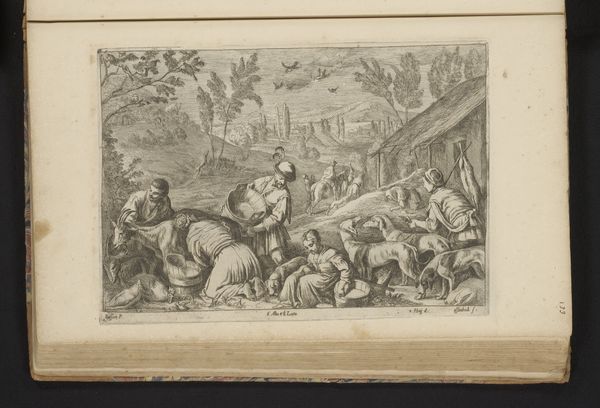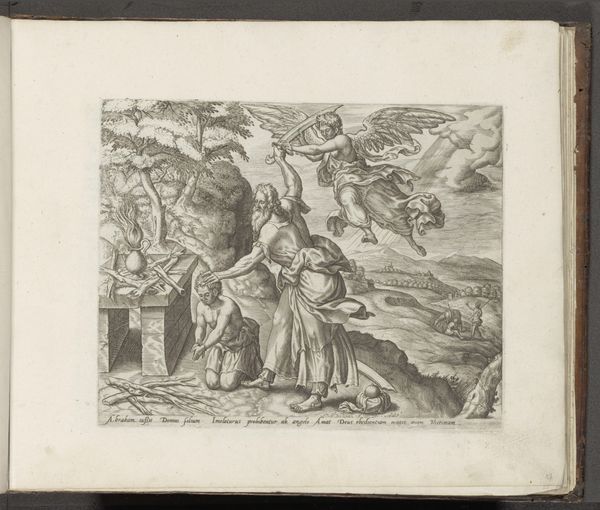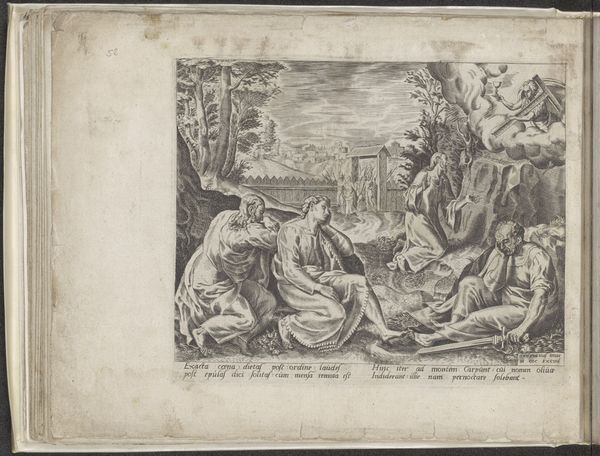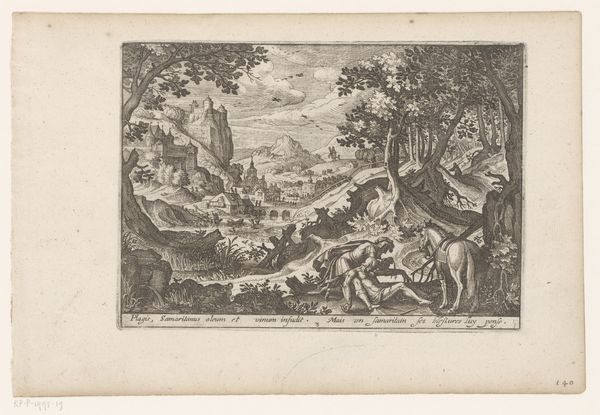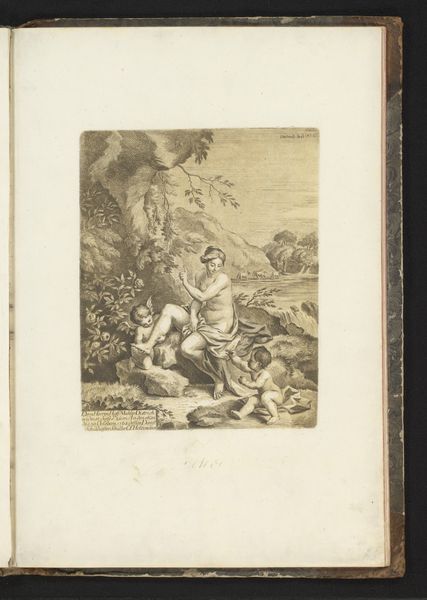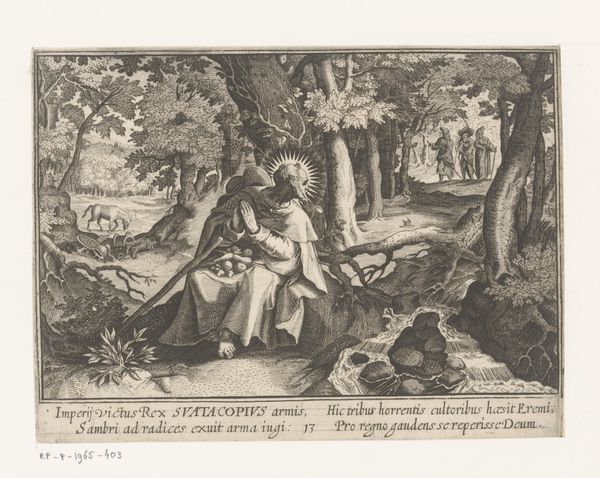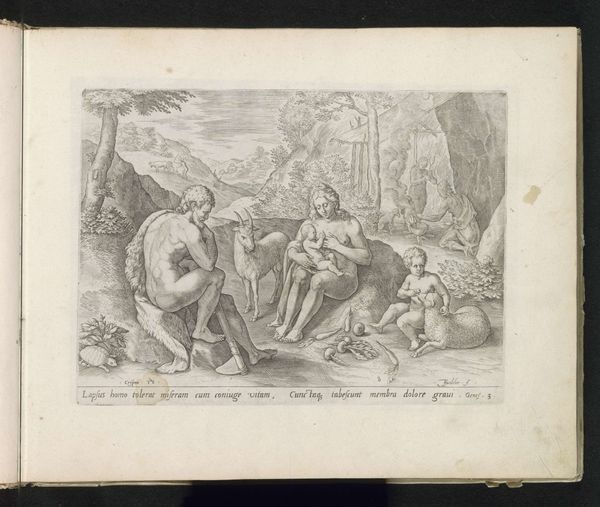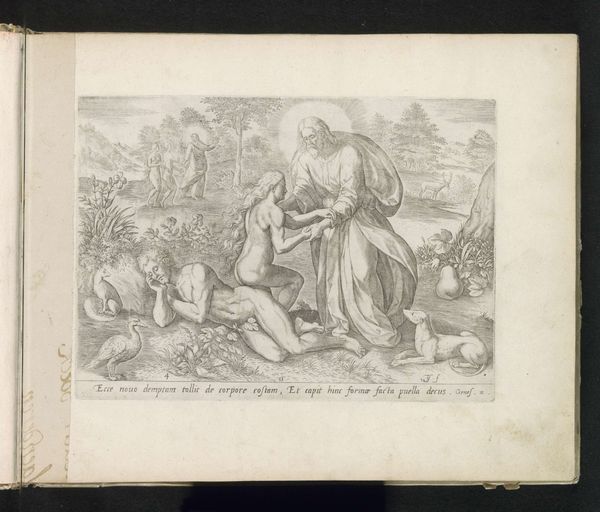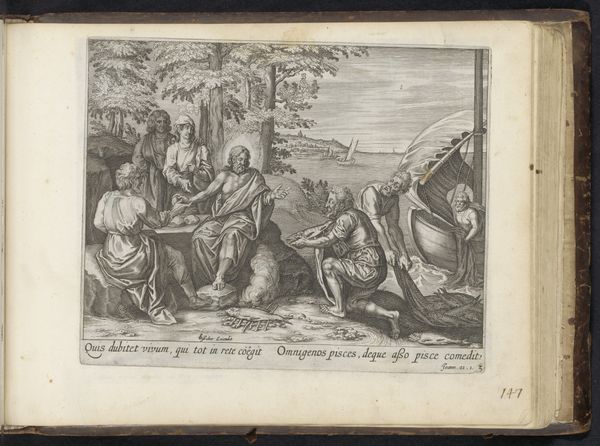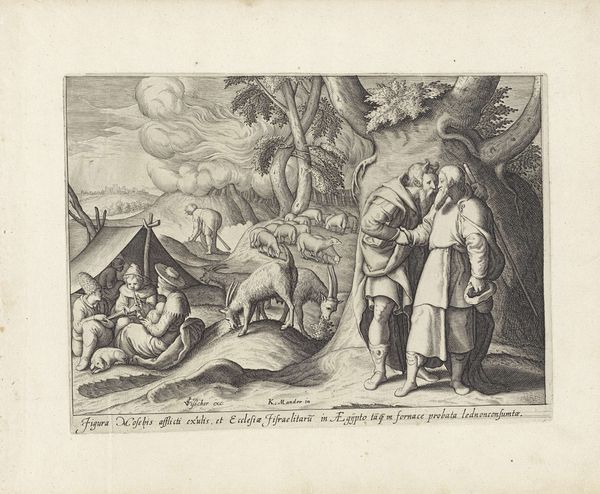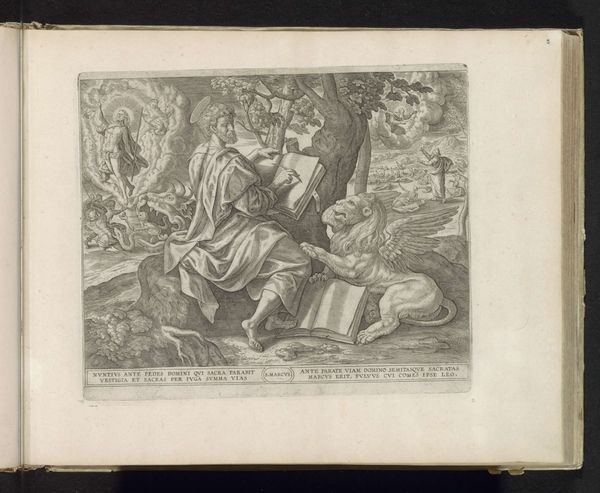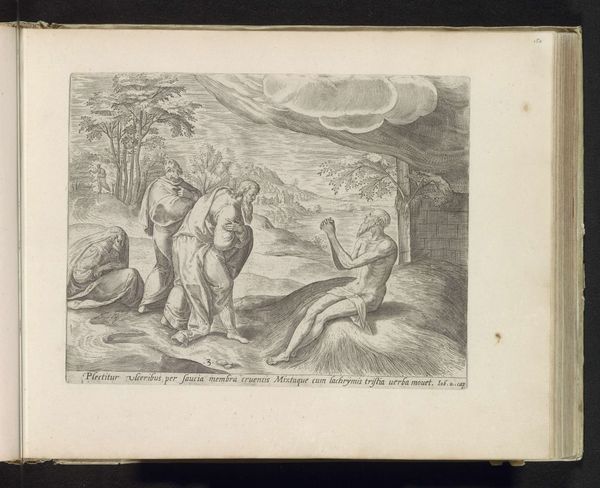
drawing, print, etching, ink, engraving
#
drawing
#
baroque
#
ink painting
# print
#
etching
#
landscape
#
ink
#
genre-painting
#
engraving
Dimensions: height 216 mm, width 274 mm
Copyright: Rijks Museum: Open Domain
Editor: We're looking at "The Journey of the Good Samaritan and the Injured Traveler," an etching from 1646 currently housed in the Rijksmuseum. I'm struck by the dramatic landscape, the tiny figures almost swallowed by the scale of nature. What can you tell me about how this landscape ties into the story? Curator: This etching exists at an interesting intersection. It’s overtly illustrating a Biblical parable, but within the larger context of the development of landscape prints. Notice how the Samaritan's act of kindness is almost secondary; the viewer’s attention is guided towards the meticulously rendered landscape. What does this shift in emphasis suggest about the cultural priorities of the time? Editor: Maybe a growing appreciation for the natural world, separate from purely religious themes? Curator: Exactly. Consider how printmaking as a medium democratized access to images. Who do you imagine was consuming these landscapes, and how might their social standing have shaped their interpretation of this work? It's not just about spiritual guidance, but about experiencing and consuming a picturesque version of the world, regardless of whether they could actually travel. Editor: So, possessing this image might have offered a kind of status? Showing that you're cultured and have access to information? Curator: Precisely! The politics of imagery in the Baroque period were deeply entwined with social identity. The printing press enabled these moral narratives to also be circulated amongst a larger community of citizens. This also reflects the larger political implications of the Reformation period. What would happen if only the religious elite were consuming such images? Editor: That adds another layer to the etching – it's not just about the story, but also about how the story was circulated and who had access to it. I learned how an artist might spread a message and use images in more democratic ways. Curator: And how even religious imagery gets swept up and reshaped by social and technological currents. Thank you, this has changed my perspective too!
Comments
No comments
Be the first to comment and join the conversation on the ultimate creative platform.
